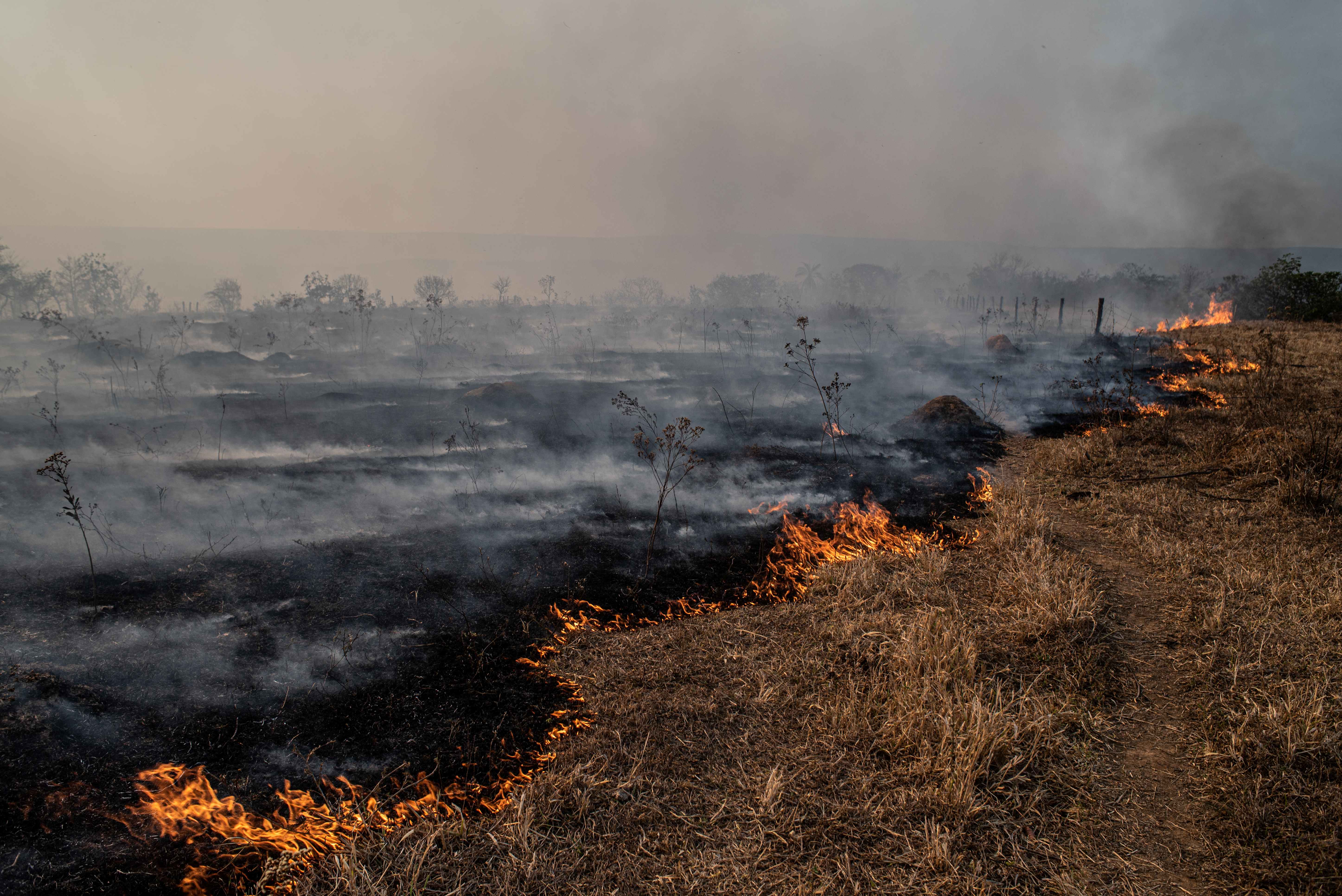تنويه: المقال يعبّر عن وجهة نظر الكاتب الذي اختار اسمًا مستعارًا له.
قبل الأول من أكتوبر/تشرين الأول 2019، كان الجميع يتغنى بحرية الصحافة في العراق، وعن سهولة التواصل مع كبار مسؤولي الدولة وأخذ تصريحات منهم، على عكس السائد عادةً في غالبية الدول العربية.
في أول أيام ذلك الشهر، غضّ الجميع الطرف عن الدعوات الخجولة التي انتشرت على وسائل التواصل الاجتماعي إلى التجمع في ساحة التحرير التاريخية وسط العاصمة بغداد، حتى إن السواد الأعظم قرّر ألا يغطيها إعلاميًّا ظنًّا منهم أنها ستكون مظاهرة مشابهة لتلك التي تجري كل يوم جمعة في البلاد منذ سنوات، وعادة ما تكون تحت مظلة الزعيم الشيعي مقتدى الصدر.
بدأ التجمع خجولا في الساحة.. هدوء وهتافات عادية متكررة رفضا للتدخل الأجنبي في البلاد، أي الإيراني والأميركي حصرًا. لكن ما لم يكن عاديًّا حينها، كان رفع صور قائد قوات مكافحة الإرهاب عبد الوهاب الساعدي، الذي أقاله رئيس الوزراء عادل عبد المهدي من منصبه لأسباب غير واضحة حتى اليوم.
انقلبت الصورة في أقلّ من نصف ساعة.. بدأت قوات مكافحة الشغب العراقية بإطلاق وابل من قنابل الغاز المدمع باتجاه المتظاهرين.. حالات اختناق كثيرة في صفوفهم، لكن ذلك لم يزدهم إلا إصرارًا على المضيّ قدمًا باتجاه جسر الجمهورية الذي يصل شرق العاصمة بغربها عبر نهر دجلة، واضعين المنطقة الخضراء الشديدة التحصين نصب أعينهم.
بدأت الاتصالات بكثافة بين الصحفيين لمحاولة فهم ما جرى.. اتفق الجميع على أن الأمور تتجه إلى التطوّر، وباتت التغطية ملحّة. انتهت الليلة بحالات اختناق، لكن الاحتجاجات لم تتوقف.
في اليوم الثاني، حمل الصحفيون أقلامهم ومسجلاتهم وكاميراتهم، واتجهوا إلى الساحة. لكن لا أحد منهم -ممن شارك في تغطية معارك تكريت والفلوجة والموصل وتلعفر ضد تنظيم الدولة الإسلامية- فكّر في ارتداء درع مضاد للرصاص أو خوذة.
غير أن رياح الاحتجاجات لم تجرِ بما اشتهته سفن السلطة، فكان القنص هو الخيار.
في تلك الليلة، استشهدت حرية الصحافة في ساحات العراق، من بغداد امتدادًا إلى جنوب البلاد..
لم توفّر رصاصات "القناصة المجهولين" -كما وصفتهم السلطات العراقية- أحدًا.. كان الدم غزيرًا في الساحات.. شهداء يسقطون على مدار الساعة.. وصل تعداد الأيام الستة الأولى من الانتفاضة التي بدأت مطلبية؛ إلى 157 قتيلاً، وقد بلغ حتى الآن أكثر من 420 قتيلاً معظمهم من المتظاهرين، بحسب حصيلة رسمية لتحقيق حكومي.
قتل صحفيان على الأقل، وأصيب العشرات منهم بجروح. لكن الطامّة الكبرى كانت حين قررت الدولة -بشكل غير رسمي- أن تكون "جمهورية خوف" تهدد الجميع، والصحفيون في المقدمة.
بدأت الأمور بمنع التصوير، ثم التدقيق في الأخبار المنشورة، وتوجيه رسائل عبر قنوات عدة، منها قنوات رسميّة. وسرعان ما خرجت الأمور عن السيطرة، حتى باتت وسائل الإعلام التي توصل أصوات المتظاهرين عدوّة للدولة، وعرضة للاقتحام.
قطعت السلطات الإنترنت، وحجبت وسائل التواصل الاجتماعي، وشرعت "قوات خاصة" غير معلومة الانتماء في "غزو" قنوات إعلامية واقتحام مقارها، وضرب العاملين فيها، وتكسير المعدات تحت أنظار كاميرات المراقبة.
خمس وسائل إعلامية على الأقل كانت ضحية تلك الممارسات.. كانت رسالة للآخرين بالكفّ عن تغطية المظاهرات.. أضيف إليها رسائل من بعض المصادر الأمنية لقنوات عدة بأن "خففوا من تغطيتكم.. وإلا!".
نفت السلطات أن تكون وراء حملة الترهيب تلك، ونسبتها إلى "جهات مجهولة"! وهو ما أثار هلعًا بين معشر الصحفيين، إذ لا جهة معروفة للتواصل معها إذا وقعت الواقعة.
ذلك الهلع عززته شائعات سرت عن لائحة تضم أسماء 136 وسيلة إعلامية وصحفيين "مطلوبين"، لم يتمكن أحد من الاطلاع عليها. ولذلك، اعتبر الجميع نفسه مهدَّدًا.
كثيرون غادروا بغداد، خصوصا إلى مدينة أربيل في إقليم كردستان العراق الذي يتمتع بحكم ذاتي، وكان بمنأى عن الاحتجاجات، على غرار المحافظات ذات الغالبية السنيّة التي كانت تمتنع عن التظاهر خوفا من التهم الجاهزة "بالإرهاب" أو الانتماء إلى حزب "البعث" البائد.
يمكن القول إن السلطات العراقية تخوفت في مكان ما من تدويل الأزمة بسبب بحث الصحفيين عن ملجأ آمن، فقررت حينها استخدام "هيئة الإعلام والاتصالات" التي تنظم عمل الصحافة في البلاد لإرسال تطمينات.
لكن الأمور لم تكن مطمئنة.. اتصلت الهيئة بمعظم الصحفيين الذين غادروا ودعتهم إلى اجتماع موسّع للاستماع إلى هواجسهم وطلباتهم، لكن النتيجة كانت رسالة واضحة "اعملوا بالحسنى.. لا تفبركوا أخبارًا، كي لا تخرج الأمور من يدنا"!
اعتبر صحفيون ذلك تهديدًا أيضًا، تُرجم ليلا عندما بدأت عمليات اختطاف لصحفيين من منازلهم أو قرب أماكن عملهم.
كان الذعر مخيّمًا، حتى قرر البعض أن أرواح الصحفيين أهم.. امتنع البعض عن التغطية لأيام عدة.
توقفت المظاهرات لفترة أسبوعين لإتاحة المجال أمام إحياء ذكرى الأربعينية التي يقوم بها الشيعة في العراق، خصوصا في محافظتي كربلاء والنجف الجنوبيتين.
استأنف العراقيون احتجاجاتهم ليلة 24 أكتوبر/تشرين الأول الماضي، ولكن الشعارات التي كانت مطلبية، باتت اليوم تطالب بتغيير الطبقة السياسية التي تحكم البلاد منذ 16 عاما.
لكن أشياء عدة تغيّرت.. توقف استخدام الرصاص الحي تمامًا بعد انتقادات عدة محلية وإقليمية ودولية، ولم يتوقف سقوط القتلى.
صار السلاح القاتل اليوم هو قنابل الغاز المدمع الذي يطلق مباشرة باتجاه رؤوس وأجساد المتظاهرين، فيخترق جماجمهم ويَلقوْن مصرعهم فورًا.
لفتت منظمات دولية عدة إلى أن القنابل التي تستخدمها القوات الأمنية قنابل عسكرية غير مخصصة لفض المظاهرات، ووزنها عشرة أضعاف القنابل المستخدمة دوليًّا.
لم يَسلم الصحفيون من ذلك أيضًا.. إصابات عدة، وحالات اختناق يومية، لكن التغطية تواصلت رغم ذلك.
حينها، عيّن رئيس الوزراء (المستقيل) -وهو أيضا القائد العام للقوات المسلحة- متحدثًا عسكريًّا باسمه، وهو اللواء عبد الكريم خلف الذي صار "عينا" تراقب الجميع، والصحافة خصوصًا، ولا يخجل من "التهديد" علنًا على الهواء بمحاكمة صحفيين وفق المادة "4 إرهاب" التي تصل العقوبة فيها إلى الإعدام!
قبل خمسة أيام فقط، قررت هيئة الإعلام تعليق عمل تسع قنوات فضائية محلية وأجنبية وإنذار خمس أخريات، بناء على "توصيات حكومية" بعد "رصد خروقات لمواد لائحة قواعد الترخيص الإعلامي".
المفارقة أن الهيئة والحكومة تتهمان وسائل الإعلام "بالتحريض على العنف والإرهاب"، لكن تلك القنوات لم تقم إلا بنقل الأحداث التي سقط فيها مئات القتلى حتى اليوم. فمن يقف في صفّ العنف يا ترى؟








































